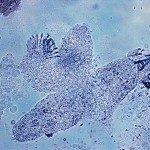Présentation
Pascal MAESER – Head of Parasite Chemotherapy – Swiss Tropical and Public Health Institute
Human African trypanosomiasis (HAT) is caused by Trypanosoma brucei rhodesiense in East Africa, and by T. b. gambiense in West and Central Africa. The vectors (and definite hosts) for all T. brucei subspecies are the tsetse flies, Glossina spp. The incidence of HAT being at a historic low, the elimination of the disease as a public health problem may finally be tangible – but only with a new, safe and uncomplicated treatment option. There is no shortage of potential drug targets. The African trypanosomes possess numerous biochemical peculiarities that are essential to the parasites but absent in mammalian cells, i.e. trypanothione metabolism, the kinetoplast, the glycosomes and RNA editing. However, target-based approaches have so far not yielded novel drug candidates. The molecules that have progressed to the clinical phases of development (pafuramidine, fexinidazole, and the benzoxaborole SCYX-7158) had been discovered in cell-based screens. I shall compare different strategies for drug discovery against HAT and recapitulate the success story of fexinidazole, which in November 2018 has received positive opinion from the European Medicines Agency as the first oral treatment for HAT.
Link to your website: https://www.swisstph.ch/de/ueber-uns/mpi/parasite-chemotherapy/

